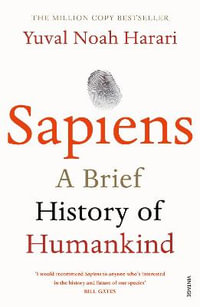1 Alkanes.- 1.1. Introduction.- 1.2. CH3 stretching frequencies.- 1.3. CH2 stretching frequencies.- 1.4. The symmetric methyl deformation frequency.- 1.5. The CH2 deformation frequency.- 1.6. Skeletal vibrations.- 1.6.1. CH2 wagging, twisting and rocking modes.- 1.6.2. Other skeletal modes.- 2 Alkenes and Vibrations of C=N and N=N Links.- 2.1. The C=C stretching frequency.- 2.1.1. Bond-angle effects.- 2.1.2. Fluorinated hydrocarbons (rings).- 2.1.3. Oxygenated ring systems.- 2.1.4. Conjugation effects in rings.- 2.1.5. Fused ring systems.- 2.2. C=C Frequencies in open chains.- 2.2.1. The effects of attachment to elements other than carbon.- 2.2.2. Fluorine substitution in open chains.- 2.2.3. Conjugation effects on double bonds in open chains.- 2.2.4. The effects of ? cloud interactions.- 2.2.5. Deuterium substitution.- 2.3. CH stretching vibrations of olefines.- 2.3.1. In-plane CH deformations in alkenes.- 2.3.2. CH out-of-plane deformation vibrations.- 2.3.3. CH out-of-plane twisting vibrations.- 2.3.4. The CH2= wagging mode.- 2.4. The C=N stretching frequency.- 2.5. The N=N stretching frequency.- 3 X=Y=Z Systems and Triple Bonds.- 3.1. Introduction, multiple bond systems.- 3.2. Isothiocyanates.- 3.3. Thiocyanates.- 3.4. Isocyanates.- 3.5. Azides.- 3.6. Carbodi-imides.- 3.7. Diazo compounds.- 3.8. Alienes.- 3.8.1. The C=C=C stretching vibration (as).- 3.8.2. The CH2 deformation of alienes and its overtone band.- 3.9. Factors controlling the stretching frequencies of triple bonds.- 3.9.1. Nitriles.- 3.10. Isonitriles.- 3.11. Alkynes.- 3.11.1 CH stretching frequencies in monosubstituted alkynes.- 3.11.2. vC=C stretching frequencies.- 3.11.3. The ?CH= deformation frequency.- 4 Unassociated XH Vibrations.- 4.1. Introduction.- 4.2. Changes in XH stretching frequencies following alterations in the X Element.- 4.3. Changes in XH stretching frequencies with alterations in the Substituents at X.- 4.4. vOH stretching frequencies.- 4.4.1. OH attached to carbon.- 4.4.2. OH attached to nitrogen.- 4.4.3. vOH with oxygen attached to other elements.- 4.5. vNH stretching frequencies.- 4.5.1. Primary amines and amides.- 4.5.2. Secondary amines and amides.- 4.6. Silicon and germanium hydrides.- 4.6.1. Silicon hydrogen stretching frequencies.- 4.6.2. Germanium hydrogen stretching frequencies.- 4.7. Hydrides of other elements.- 4.7.1. PH stretching frequencies.- 4.7.2. SH and SeH stretching frequencies.- 4.7.3. BH stretching frequencies.- 4.7.4. Metal-hydrogen stretching frequencies.- 5 Carbonyl Frequencies.- 5.1. Introduction.- 5.2. Mass effects.- 5.3. Frequency interaction effects.- 5.3.1. Interactions through Fermi resonance.- 5.3.2. Frequency interactions between two carbonyl groups.- 5.3.3. 1, 4-Dicarbonyl compounds.- 5.3.4. 1, 2-Dicarbonyl compounds.- 5.4. The effects of changes in bond angles, and in the strengths of the adjacent bonds.- 5.5. Chemical effects.- 5.5.1. Inductive and resonance effects.- 5.6. Field effects in carbonyl compounds.- 5.6.1. ?-Halogen interactions.- 5.6.2. Field effects with other atoms or groups in the ?-position.- 5.6.3. Interactions with polar groups not at the ?-position.- 5.7. The effects of changes of phase or of Association.- 5.7.1. Solvent effects on vCO.- 5.7.2. Interactions of the carbonyl group with hydrogen donors.- 5.7.3. Carbonyl complexes with Lewis acids.- 5.8. Carbonyl frequencies in specific classes of compound.- 5.8.1. Alkyl, aryl and conjugated ketones.- 5.8.2. Aldehydes.- 5.8.3. Esters and lactones.- 5.8.4. Acid halides.- 5.8.5. Chloroformates and related compounds.- 5.8.6. Anhydrides and peroxides.- 5.8.7. Carbonates, thiolcarbonates and dithiolcarbonates.- 5.8.8. Thiolesters.- 5.8.9. Carboxylic acids.- 5.8.10. Amides.- 5.8.11. Imides.- 5.8.12. Carbamates and thiocarbamates.- 5.8.13. Ureas.- 5.8.14. Amides with an element other than carbon attached to the nitorgen atom.- 5.8.15. Silyl esters.- 5.9. The carbonyl deformation frequency.- 6 X=Y Bonds Other than Carbonyl. vS=O, N=O, P=O, P=S, C=S and C=Se Vibrations.- 6.1. The sulphoxide group.- 6.1.1. Characteristic frequencies of the SO link.- 6.1.2. The variations of vSO with changes in the substituents.- 6.1.3. Sulphoxides as donors; solvent effects.- 6.2. The XN=O bond.- 6.2.1. Bond characteristics.- 6.2.2. Group frequencies.- 6.3. The P=O stretching frequency.- 6.3.1. P=O frequencies in compounds other than acids or amides.- 6.3.2. Group frequencies of phosphorus acids and amides.- 6.3.3. The systematics of the P=O frequencies in relation to the substitution pattern.- 6.3.4. Basicity studies on phosphoryl compounds.- 6.4. The P=S vibration.- 6.5. The P=Se vibration.- 6.6. The C=S vibration.- 6.7. The C=Se vibration.- 7 Stretching Vibrations of XO2 Systems, RSO2, RNO2, RCO2.- 7.1. The SO2 stretching vibrations.- 7.1.1. Group frequencies of the SO2 link.- 7.1.2. Factors affecting the positions of the SO2 stretching bands.- 7.1.3. Basic properties of the SO2 group.- 7.2. The X-NO2 stretching vibrations.- 7.2.1. The C-NO2 group.- 7.2.2. Covalent nitrates.- 7.2.3. XNO2 stretching bands when X is an element other than carbon or oxygen.- 7.2.4. The Systematics of the changes in vas and vs in XNO2 compounds.- 7.2.5. Other characteristic frequencies of the nitro group.- 7.3. The ionized carboxyl group CO2-.- 8 Associated XH Frequencies, The Hydrogen Bond.- 8.1. Introduction.- 8.2. OH...X systems.- 8.2.1. OH interactions with ? clouds.- 8.2.2. OH...halogen interactions.- 8.2.3. OH...O hydrogen bonds.- 8.2.4. OH...N systems.- 8.2.5. Very strong hydrogen bonds.- 8.2.6. OH deformation vibrations.- 8.3. NH...X hydrogen bonds.- 8.3.1. Hydrogen bonding in alkyl and aryl amines.- 8.3.2. Hydrogen bonding by heterocyclic amines.- 8.3.3. Hydrogen bonding in amides.- 8.4. Hydrogen bonding in thiols.- 8.5. CH...X hydrogen bonds.- 8.5.1. Hydrogen bonding by haloforms.- 8.5.2. Hydrogen bonds with acetylenic and other acidic CH bonds.- 8.6. Hydrogen bonds of inorganic acids.
























